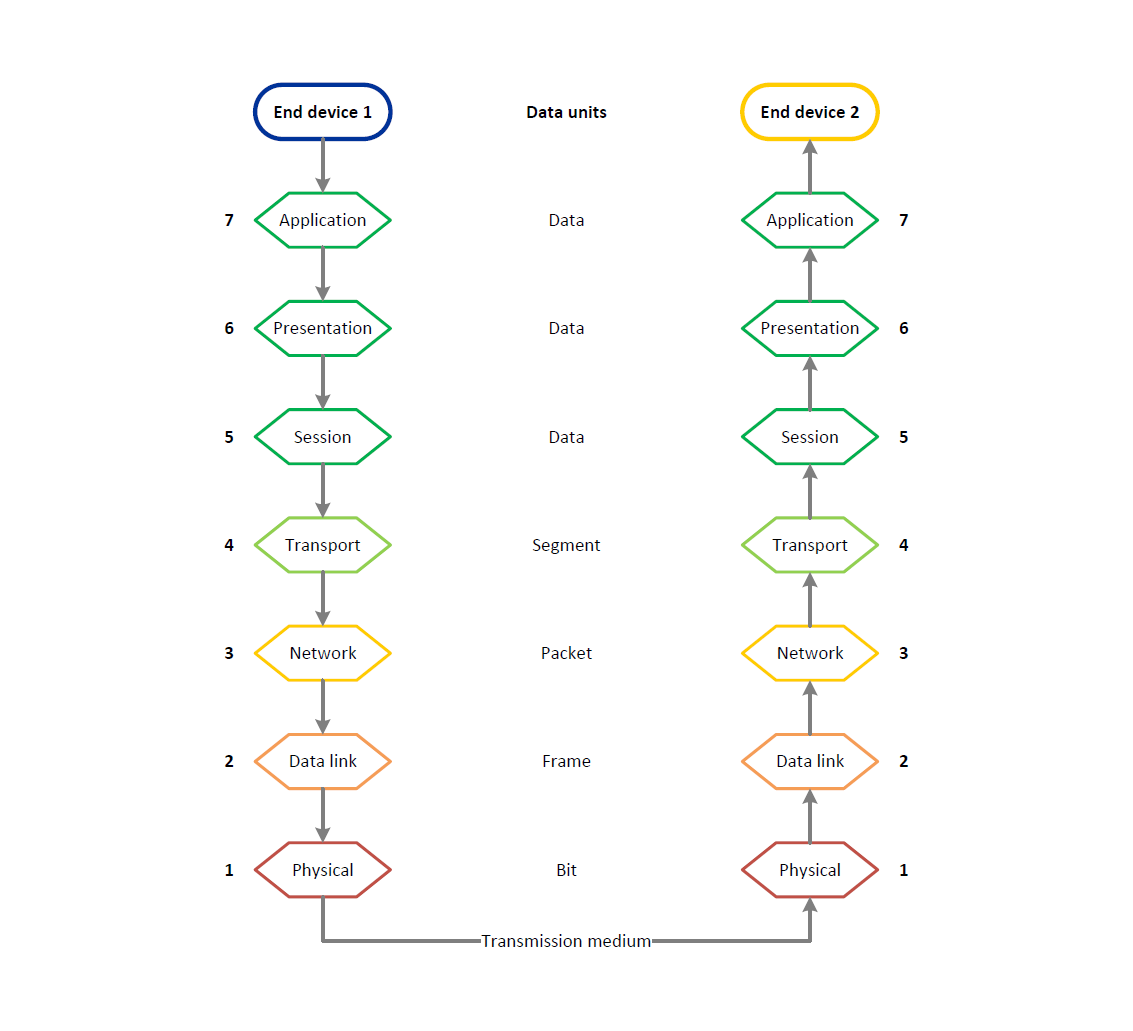OSI layer model
Open Systems Interconnection model (OSI model)
Layer models have been established in computer and network technology to break down complex processes into individual steps. Each step or task is represented as a layer in a layered model.
The OSI layer model is a reference model for manufacturer-independent communication systems and a design basis for communication protocols and computer networks.
OSI means Open System Interconnection and was designed by the ISO (International Organization for Standardization) as the basis for the formation of open communication standards.
The OSI layer model consists of 7 layers and is based on the DoD (United States Department of Defense) layer model. Compared to the DoD layer model, the OSI layer model is finer and more detailed. Each layer defines specific tasks and functions for communication between two systems. Procedures and protocols exist for each layer that fulfill specific tasks and provide a specific service to the higher layer.

When communicating between two systems, the communication or data flow passes through all 7 layers of the OSI layer model at least twice. Once for the sender and once for the receiver. Depending on how many intermediate stations the communication route has, the communication runs through the layer model several times, either partially or completely.